
|
|
Font Size:
|
||||
|
|
|
|
||||
STATISTICAL BRIEF #28:
Health Insurance Status of Children in America: 1996-2002 Estimates for the Non-institutionalized Population Under Age 18
Briefly Stated
- From 1996 to 2002, the percentage of uninsured children declined from 15.7% to 12.9%.
- The percentage of children covered by public only health insurance increased between 1996 and 2002, from 21.3% to 26.3%. At the same time, the number of children covered by public only insurance increased by 5.4 million, from 13.8 million to 19.2 million.
- Younger children were more likely to rely on public only health insurance. In 2002, 32.1% of children aged 0-3 were covered by public only health insurance compared with 20.4% of children aged 13-17.
- Black children were the most likely to be covered by public only health insurance (46.9% in 2002). Hispanic children were the most likely to be uninsured in each year from 1996 to 2002 (23.8% in 2002).
- In 2002, almost half (47.0%) of children with poor or fair health status were covered by public only health insurance.
Introduction
This Statistical Brief presents data from the Medical Expenditure Panel Survey (MEPS) concerning the health insurance status of children, a key element related to their health care. MEPS, an annual household survey sponsored by the Agency for Healthcare Research and Quality (AHRQ), provides critical data for evaluating trends in health insurance status. Data are presented from the first half of calendar years 1996 through 2002. Only differences that are statistically significant at the .05 level are discussed in the text.
Findings
As shown in Figure 1, the percentage of children (under age 18) who were uninsured declined from 1996 to 2002 by 2.8 percentage points, from 15.7% to 12.9%. Concurrently, the percentage of children covered by public only health insurance increased from 21.3% to 26.3% (Figure 1) and the number of children covered by public only health insurance increased by 5.4 million, from 13.8 million to 19.2 million (Figure 2).
The increase in public only health insurance over this period was shared by children in all age groups, as can be seen in Figure 3. In addition, rates of public only coverage were higher each year for children under age 6. For example, in 2002, 32.1% of children aged 0-3 were covered by public only health insurance compared to 25.6% and 20.4% of children aged 7-12 and 13-17, respectively (Figure 3).
As shown in Figure 4, black children were more likely to be covered by public only health insurance than other racial and ethnic groups. (The difference between black children and Hispanic children was not statistically significant in 1999 and 2000.) In 2002, 46.9% of black children were covered by public only health insurance compared to 38.3% of Hispanic children and 18.4% of white and other children (Figure 4). The increase in the percentage of Hispanic and white and other children covered by public only health insurance between 1996 and 2002 was statistically significant; the increase for black children was not statistically significant.
Hispanic children were more likely than children of other racial and ethnic groups to be uninsured in each year from 1996 through 2002 (Figure 5). For example, in 2002, 23.8% of Hispanic children were uninsured, compared with 11.1% of black and 10.4% of white and other children. In addition, while the percentage of black children and white and other children who were uninsured declined significantly between 1996 and 2002 (from 17.6% to 11.1% and 12.6% to 10.4%, respectively), the decline in the percentage of uninsured Hispanic children (from 28.1% to 23.8%) was not statistically significant.
As shown in Figure 6, children with poor or fair health status were more likely to be covered by public only health insurance than children with excellent or very good health. In 2002, almost half (47.0%) of children with poor or fair health status were covered by public only health insurance. In contrast, less than one-quarter of children in excellent or very good health had similar coverage in 2002 (22.7% and 24.8%, respectively).
Definitions
Uninsured
Children classified as uninsured throughout the first half of the year did not have public or private health insurance coverage during the period from January of the survey year through the time of their first interview in that year. Interviews were typically conducted from March to July. People covered only by non-comprehensive State-specific programs (e.g., Maryland Kidney Disease Program) or private single-service plans (e.g., coverage for dental or vision care only, coverage for accidents or specific diseases) were not considered to be insured.
Public Coverage
Children were considered to have public only health insurance coverage, if they were not covered by private insurance and they were covered by Medicare, Medicaid, TRICARE, or other public hospital and physician coverage.
Private Coverage
Private health insurance coverage was defined as non-public insurance that provided coverage for hospital and physician care (including Medigap coverage).
About MEPS
The estimates presented in this Statistical Brief come from the MEPS Household Component. MEPS is a nationally representative survey of the U.S. civilian non-institutionalized population that collects detailed data for both individuals and households on demographic characteristics, health conditions, health status, use of medical care services, charges and payments, access to care, satisfaction with care, health insurance coverage, income, and employment. Other MEPS components collect data on the use, charges, and payments reported by medical care providers, as well as data on the supply side of the health insurance market. For a detailed description of the MEPS survey design, see J. Cohen (1997) and S. Cohen (1997).
MEPS data are released to the public in a number of formats, including public-use data files and the printed MEPS Research Findings and MEPS Chartbook series. The numbers shown in this Statistical Brief are drawn from analyses conducted by the MEPS staff from the following 1996 to 2002 point-in-time public-use files: HC-001, HC-005, HC-009, HC-013, HC-022, HC-034, and HC-053.
Health Insurance Status of Children in America--1996-2002
For more information about MEPS, call the MEPS information coordinator at AHRQ (301-427-1406) or visit the MEPS Web site at:
http://www.meps.ahrq.gov/
References
Cohen J. Design and methods of the Medical Expenditure Panel Survey Household Component. Rockville (MD): Agency for Health Care Policy and Research; 1997. MEPS Methodology Report No. 1. AHCPR Pub. No. 97-0026.
Cohen S. Sample design of the 1996 Medical Expenditure Panel Survey Household Component. Rockville (MD): Agency for Health Care Policy and Research; 1997. MEPS Methodology Report No. 2 AHCPR Pub. No. 97-0027.
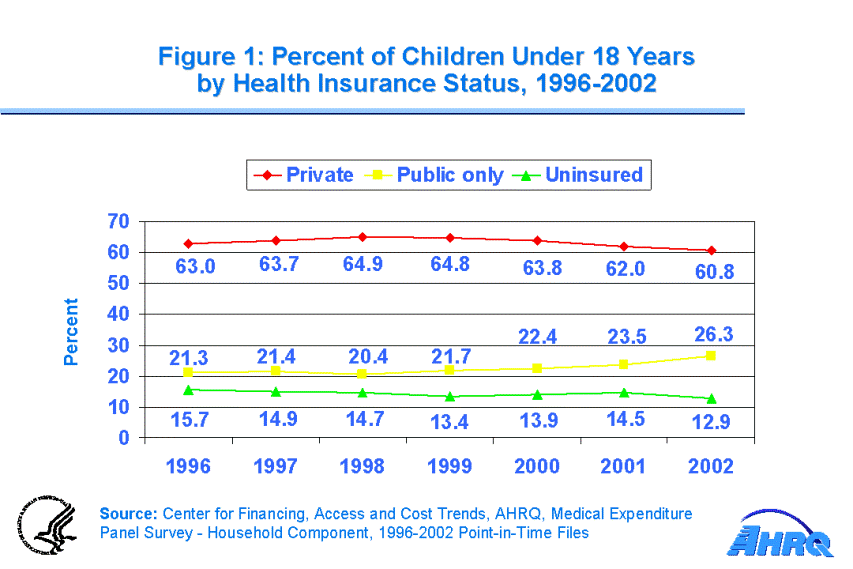 |
||||||||||||||||||||||||||||||||||||||||||||||||||||||||
|
||||||||||||||||||||||||||||||||||||||||||||||||||||||||
|
|
||||||||||||||||||||||||||||||||||||||||||||||||||||||||
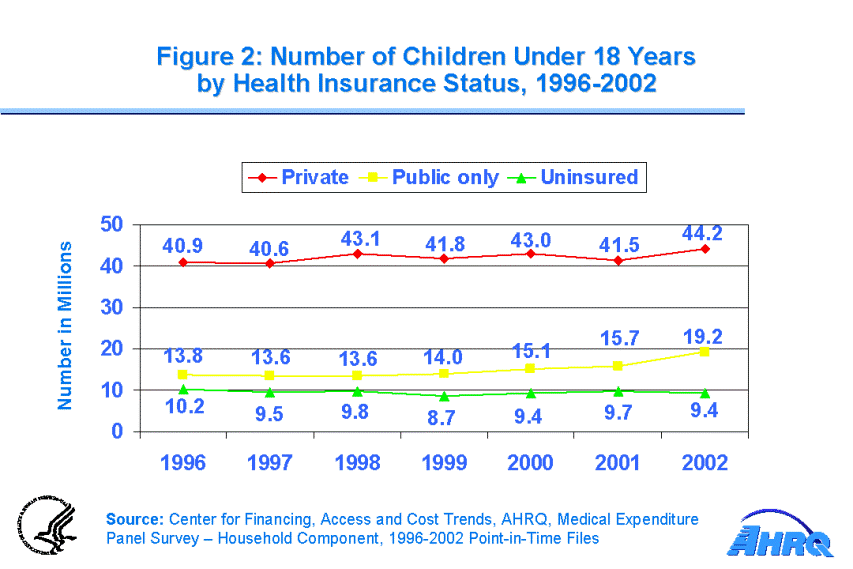 |
||||||||||||||||||||||||||||||||||||||||||||||||||||||||
|
||||||||||||||||||||||||||||||||||||||||||||||||||||||||
|
|
||||||||||||||||||||||||||||||||||||||||||||||||||||||||
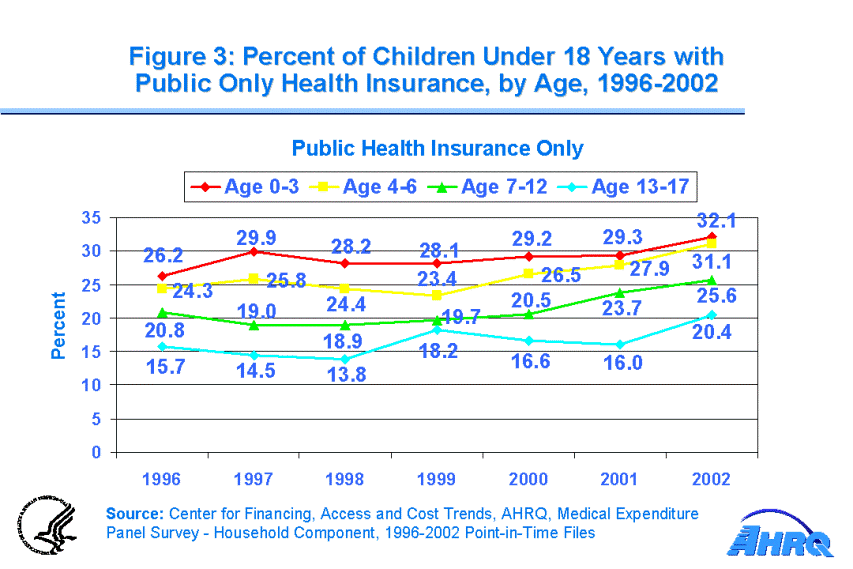 |
||||||||||||||||||||||||||||||||||||||||||||||||||||||||
|
||||||||||||||||||||||||||||||||||||||||||||||||||||||||
|
|
||||||||||||||||||||||||||||||||||||||||||||||||||||||||
 |
||||||||||||||||||||||||||||||||||||||||||||||||||||||||
|
||||||||||||||||||||||||||||||||||||||||||||||||||||||||
|
|
||||||||||||||||||||||||||||||||||||||||||||||||||||||||
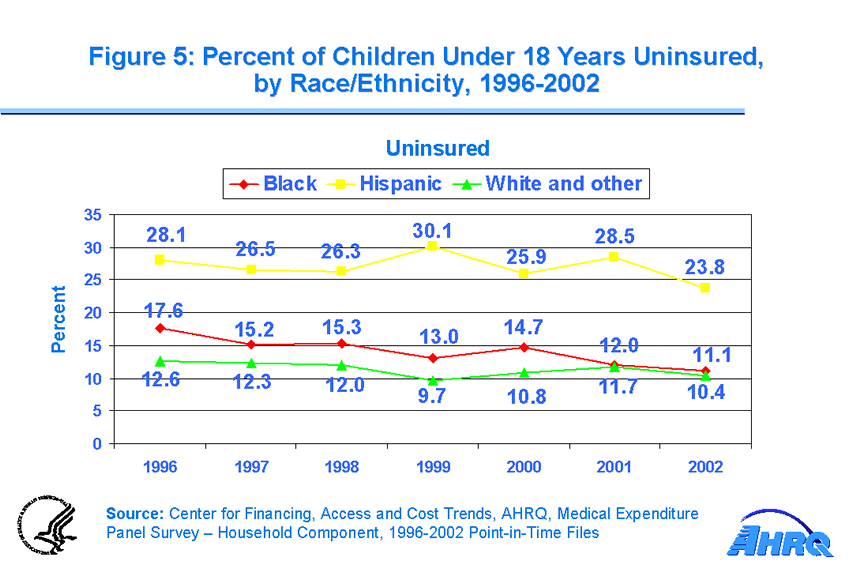 |
||||||||||||||||||||||||||||||||||||||||||||||||||||||||
|
||||||||||||||||||||||||||||||||||||||||||||||||||||||||
|
|
||||||||||||||||||||||||||||||||||||||||||||||||||||||||
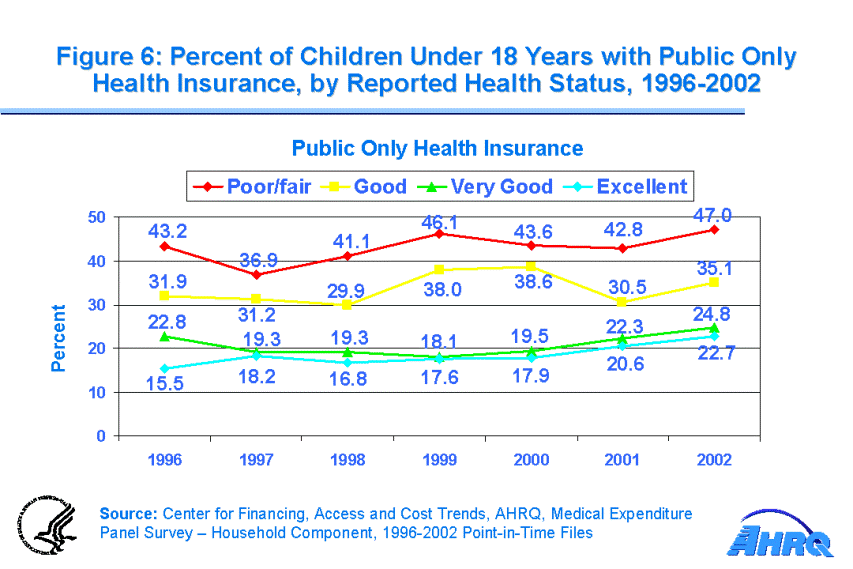 |
||||||||||||||||||||||||||||||||||||||||||||||||||||||||
|
||||||||||||||||||||||||||||||||||||||||||||||||||||||||
|
|
||||||||||||||||||||||||||||||||||||||||||||||||||||||||


